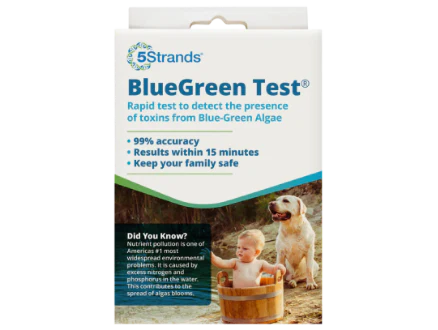Your hair can provide a lot of information about you and your body. It is becoming more popular to utilize hair for different types of testing. Hair analysis tests are less invasive and results are available in a short time. The results can provide you and your health care professional details about your health and lifestyle habits.
What Can You Check For with a Hair Sample?
There are several different types of testing on the market that will analyze hair:
Drug testing - this type of test will screen for illicit drug use such as cocaine, amphetamines, marijuana, ecstasy, PCP, and opioids. This test may be chosen over a urine test because it can detect drug use up to a 90 day period.
Hair Tissue Mineral Analysis (HTMA) - this type of testing will measure the amounts of essential nutrients and any toxic heavy metals that you have in your body’s tissues.
Genetic Disorders - It is also helpful to detect some genetic disorders such as fragile X.
Paternity Testing - Samples from both the baby and the suspected father are needed.
Forensic Testing - This type of testing is used to help identify a person who may have been present at a crime scene.
FOOD INTOLERANCES - Intolerance testing can be conducted with a hair sample using bioresonance technology. 5Strands Affordable Testing conducts this type of testing. Intolerance testing is looking at non-immune system responses so a blood sample is not needed since it is not looking for antibodies. Food intolerances may be due to an enzyme deficiency. The symptoms are not life threatening. A food allergy can be dangerous and even deadly. You must have eaten the food twice. The first time consumed, your body will create antibodies that will then try to defend the body the next time you eat that food item.
Intolerances are more common than allergies. Only about 3% of adults develop allergies.
See the chart below that points out the major differences between an allergy and an intolerance:

Symptoms:
While the symptoms of a true allergy and an intolerance may overlap, they are completely different.

What is Bioresonance?
Bioresonance technology is a safe, non-invasive form of assessment for energetic alignments in the body. Bioresonance therapy and testing is categorized as a complementary and alternative medicine (CAM). CAM covers a wide range of therapies that fall outside mainstream medicine, but can become part of an overall healthcare plan.
The premise is based on biophysics and quantum mechanics. All particles of matter share the characteristics of both waves and particles and emit electromagnetic waves. Every person, food substance, viruses, bacteria, pollens,or toxin has its own unique wavelength or frequency with individual characteristics. This is called their energetic blueprint.
It uses a machine to measure the frequency of energy wavelengths coming from the body (hair sample). These frequencies are compared to the frequencies of all the items tested for; food items, non-food items, vitamins, minerals, metals in order to establish their levels in the body and any imbalance.
Bioresonance hair testing is used throughout the world including by Chinese hospitals, the Russian Space project and over 7000 practitioners in Germany, Austria and Switzerland. Bioresonance therapy is used by professional sports teams and Olympic teams alike to understand issues not always picked up by conventional medicine.
How Does it work?
Bioresonance is based on the idea that unhealthy cells or organs emit altered electromagnetic waves due to DNA damage.
Proponents of bioresonance believe that detection of these waves can be used to diagnose disease, while changing these waves back to their normal frequency will treat disease.
To use bioresonance, electrodes are placed on the skin and hooked up to a machine that “reads” the energy wavelengths coming from the body. This is the process of diagnosis.
Then, those energy frequencies can be manipulated by the machine to allow the body’s cells to vibrate at their “natural frequency,” which purportedly treats the condition.
5Strands Affordable Testing has taken the original concept of bioresonance therapy and developed an “at home” testing kit that utilizes the first step in this technology by reporting the findings of the imbalances that are presented. Instead of the customer having to be available for therapy, they can follow the guidelines given in the results report that provide a comprehensive elimination plan. Utilizing this guideline , the customer can then determine how to change their diet and lifestyle in order to lessen or eliminate the unwanted symptoms they are experiencing.
The 5Strands Food Intolerance assessment will compare the body’s electrical resonance to several food items within the categories of protein, grain, fruit, dairy, fat, seafood, spices, sweeteners, additives, and beverages. For many people, some of these specific items can contribute to sensitivities or reactions in the gut and brain.

How Accurate Are the Hair Testing Results?
A strict elimination diet is truly the only way to test for food intolerances with complete accuracy. While an elimination diet is considered the "Gold Standard," it is extremely challenging for an individual to be disciplined in their food intake and control every aspect of their food sourcing. The amount of time required to conduct such a regimented diet can be very lengthy and costly, especially if the individual has no guidelines on how to determine potentially offending items. 5Strands Affordable Testing removes the guesswork and makes the elimination diet easier by providing the exact list of items that should take priority in your elimination diet.
The accuracy of the results is directly related to the amount of interaction and diligence that is given implementing the results.
Does Bioresonance work?
Research is limited regarding how effective bioresonance is in diagnosing and treating health conditions.
There are studies related to its use in treating allergies.
Allergies and related conditions
Using bioresonance to treat allergies and related conditions such as eczema and asthma is one of the most well-studied areas of bioresonance treatment.
There have been a number of both controlled (using a placebo) and uncontrolled (observational) studies in this area.
Controlled studies are generally considered of a higher caliber than uncontrolled studies due to their ability to compare treatment to a placebo.
Controlled studies have had mixed or negative results as to whether bioresonance can help treat allergies.
















